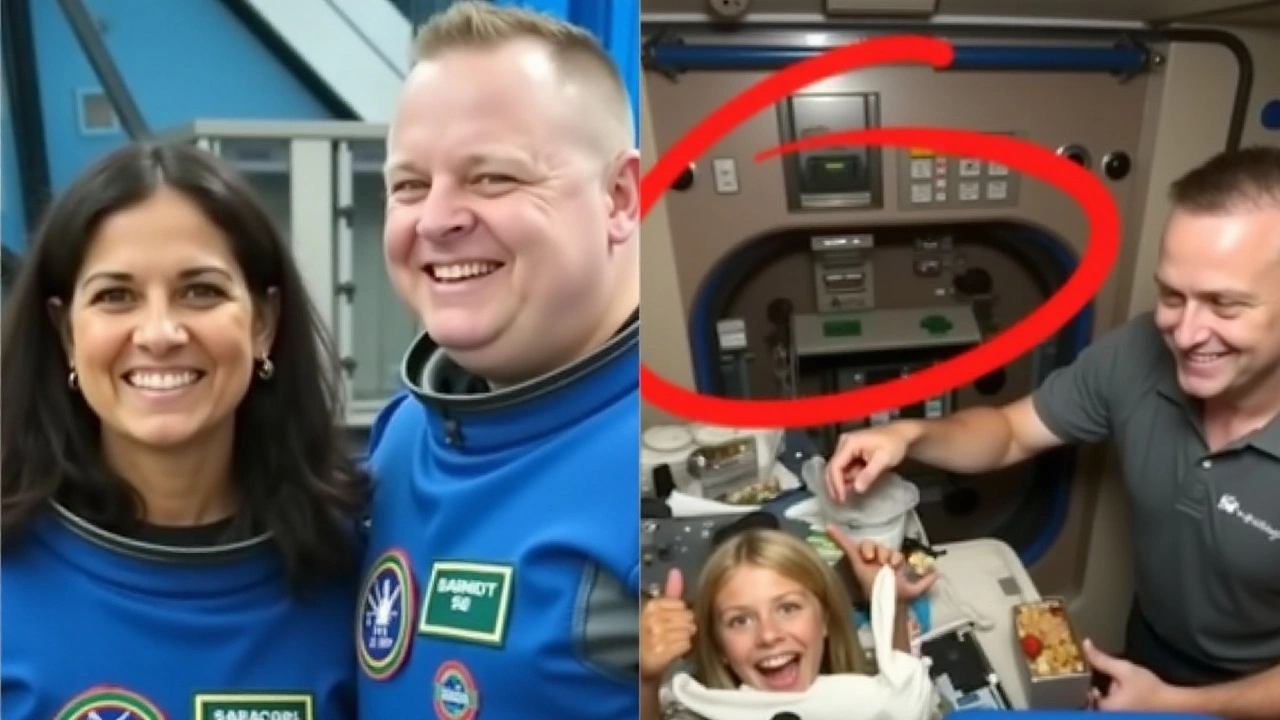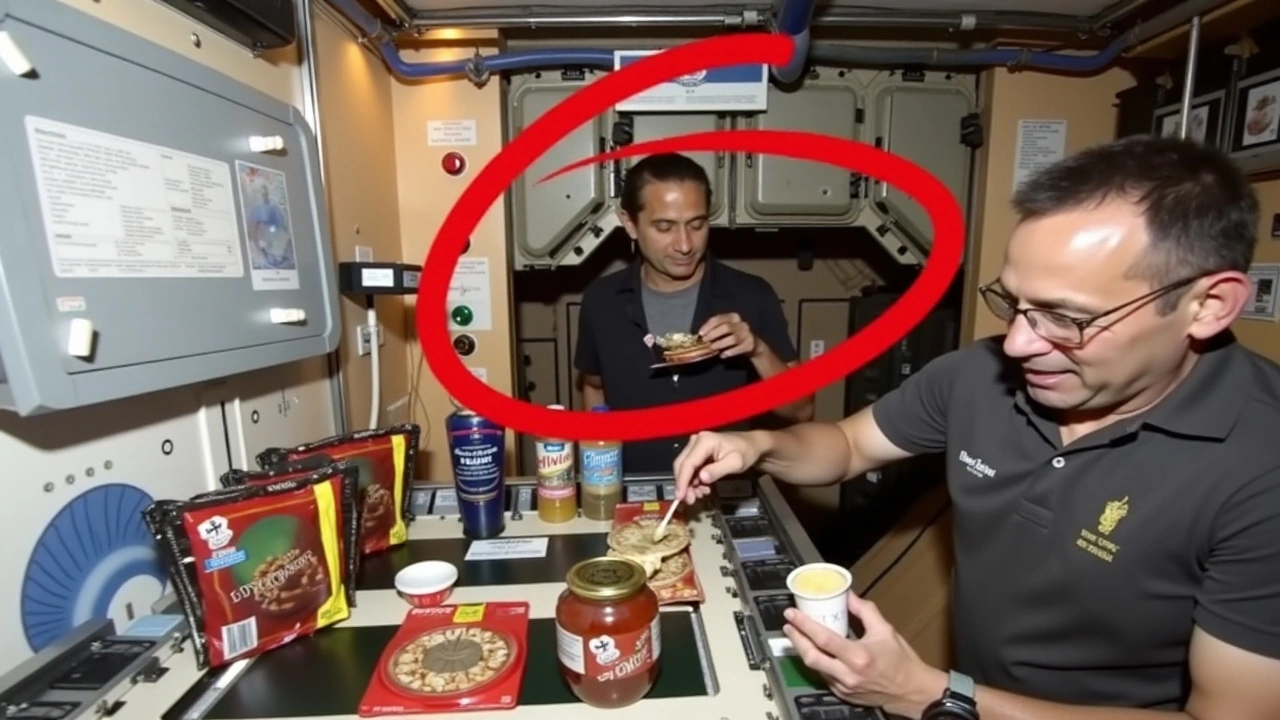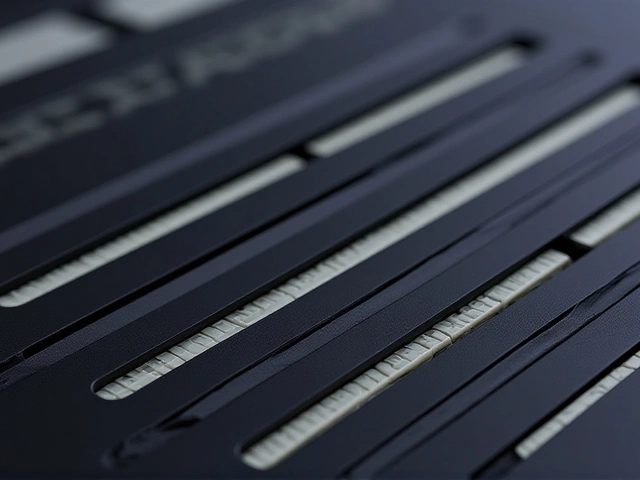The Shocking Transformation of Sunita Williams: A Reflection on Space Living
Sunita Williams, a renowned astronaut from NASA, recently became the subject of widespread concern following the release of a picture showing her significant weight loss. Stationed aboard the International Space Station (ISS) for an extended mission, Williams is grappling with the adverse effects of space travel. These include the stark realities of living in an environment dominated by microgravity, which directly impacts physical health by rapidly decreasing muscle mass and bone density. Her mission, initially slated for completion on June 14, has been postponed until June 26, with the possibility of further extension. This delay has only heightened concerns about the strain that prolonged exposure to microgravity imposes on her physical well-being.

Dealing with Microgravity: Nutritional Challenges and Health Risks
The absence of gravity in space presents unique challenges. On Earth, gravity plays a critical role in maintaining our skeletal and muscular health by continuously exerting force on our bodies. In space, this gravitational pressure vanishes, leading to bone and muscle atrophy. For astronauts like Williams, this poses a risk of conditions similar to osteoporosis, where bones become brittle and fragile. This weight loss is not mere discomfort but a significant health issue that NASA has to address continuously during these missions.
Nutritional Science and Space Food: Ensuring Adequate Intake
NASA has long understood the importance of nutrition in space, and they address it with an intricate system of food classification and preparation. The food provided to the astronauts is designed to be rich in vital nutrients necessary for maintaining health in the challenging conditions of space. Each meal is part of a carefully curated diet that conforms to recommended dietary allowances, crafted to provide the necessary vitamins and minerals.
The Eight Categories of Space Food
Space nourishment is sorted into eight distinct categories to optimize nutrition intake: rehydratable food, natural form foods, irradiated food, frozen food, fresh food, refrigerated food, thermostabilized food, and powdered drinks. Each category serves a specific purpose and provides distinct nutritional benefits to the astronauts.
- Rehydratable Food: These foods, such as oatmeal and certain beverages, are dehydrated prior to space travel and rehydrated before consumption, preserving both weight and volume which are critical parameters in space travel.
- Natural Form Foods: Items like nuts, granola bars, and cookies fall within this category, providing essential proteins, fibers, and carbohydrates in unprocessed form.
- Irradiated Food: This involves cooking, packaging, and sterilizing food like steak and smoked turkey through ionizing radiation to ensure the absence of pathogens.
- Frozen Foods: Quiches and casseroles are examples of frozen foods—quickly frozen to maintain their texture and nutritional value.
- Fresh Foods: Integral to providing essential vitamins, fresh items like apples and bananas are included in the diet without artificial preservation.
- Refrigerated Foods: Some items such as cream cheese and sour cream require refrigeration to mitigate spoilage, ensuring good food quality.

Food Systems Engineering: Developing Space Sustenance
This categorization and extensive preparation of space food take place at the Food Systems Engineering Facility, where rigorous testing is conducted. The facility plays a crucial role in exploring diverse food solutions to provide astronauts with enjoyable yet nutritious meals. Astronauts themselves participate in taste tests, evaluating aspects such as appearance, color, odor, flavor, and texture to refine these food products. This vital input helps researchers design food products that support physical and mental well-being during the strenuous conditions faced during space missions.
Addressing Health Concerns: An Urgent Call to Action
Despite NASA's robust efforts to provide suitable nutrition, Sunita Williams' recent images underscore the persistent health challenges faced by astronauts during extended missions. These challenges are not just physical but encompass psychological and emotional aspects due to isolation and confinement. Tensions run high as NASA looks into more innovative ways to counteract these problems—focusing on not only improving dietary practices but also advancing technologies to simulate gravity, thereby supporting skeletal and muscular health.
Moving Forward: A Continuous Learning Curve
The journey toward finding effective solutions to the health issues posed by space missions is ongoing. With each mission, NASA gathers valuable data, contributing to the future health protocols for spacefarers. As space exploration becomes more ambitious, with missions planned for Mars and beyond, understanding and mitigating these health risks are imperative. In the span of cosmic travel, what Sunita Williams contends with today will lay the groundwork for safer, more informed missions tomorrow.
As we continue to admire the courage and perseverance of astronauts like Sunita Williams, let us remain mindful of the complex hurdles they face. It is a testament to human endeavor and ingenuity that NASA persists in turning cosmic dreams into reality, armed with the knowledge laid down by these valiant explorers.






mary oconnell
November 8, 2024 AT 22:58 PMNavigating the labyrinthine challenges of nutrition in microgravity is a quintessential exemplar of aerospace physiology. When an astronaut like Sunita Williams experiences profound catabolic acceleration, the cascade of metabolic derangements is almost cinematic. Microgravity‑induced osteoclastic activity precipitates skeletal demineralization at a rate that would alarm even the most hardened orthopedist. Concomitantly, the attenuation of muscular protein synthesis drives sarcopenic regression, manifesting visibly as weight loss. The dietary architecture aboard the ISS, segmented into eight meticulously curated categories, is designed to counteract these pathophysiological vectors. Rehydratable meals supply macronutrient density while conserving volume, a critical logistic metric in orbital habitats. Natural form foods, despite their simplicity, furnish essential micronutrients that synergize with vitamin D supplementation to bolster calcium homeostasis. Irradiated protein sources, such as sterilized steak, deliver high‑quality amino acid profiles indispensable for maintaining nitrogen balance. Frozen entrées preserve textural fidelity, ensuring palatability-a nontrivial factor in sustaining caloric intake. Fresh produce, albeit limited by storage constraints, injects phytochemical antioxidants that mitigate oxidative stress induced by cosmic radiation. Refrigerated items maintain microbial safety, preventing opportunistic infections that could further compromise systemic resilience. Yet, despite this exhaustive nutraceutical repertoire, the intrinsic absence of gravitational loading renders even the most sophisticated diet partially impotent. Hence, artificial gravity countermeasures and resistance exercise regimes are imperative adjuncts to nutritional strategies. The psychophysiological dimension cannot be dismissed; morale and sensory satisfaction intertwine with metabolic outcomes. In confronting these multifaceted hurdles, NASA’s interdisciplinary teams exemplify translational ingenuity that will underpin future interplanetary voyages. So while Sunita’s visible transformation may appear alarming, it serves as a data‑rich sentinel prompting iterative refinement of spaceflight health protocols.
Michael Laffitte
November 20, 2024 AT 12:45 PMWow, she’s literally losing weight faster than my Wi‑Fi drops.
sahil jain
December 2, 2024 AT 02:31 AMKeeping up with the nutritional regimen in orbit is a massive team effort; every bite counts toward preserving musculoskeletal integrity.
Bruce Moncrieff
December 13, 2024 AT 16:18 PMMan this is intense it's like watching a live science experiment unfold right there in the vacuum of space
Dee Boyd
December 25, 2024 AT 06:05 AMThe ethical imperative for NASA to preemptively mitigate microgravity‑induced physiologic decline cannot be overstated; any negligence contravenes the principle of astronautic beneficence.